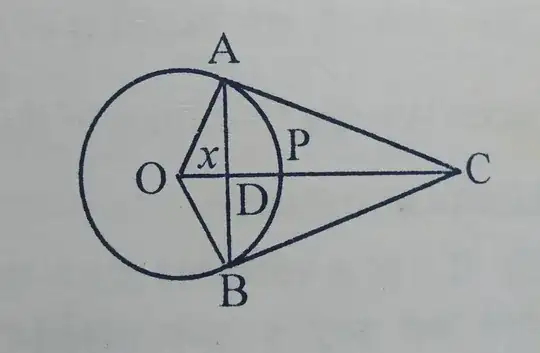My book was proving $\lim_{x \to 0}\frac{\sin x}{x}$, and it dished out this line out of nowhere:
$$\text{chord}\ AB<\text{arc}\ APB<AC+BC$$
Now, I can get behind $\text{chord}\ AB<\text{arc}\ APB$. However, how does my book know that $\text{arc}\ APB<AC+BC$?
More info: The radius $OP$ bisects the chord $AB$
